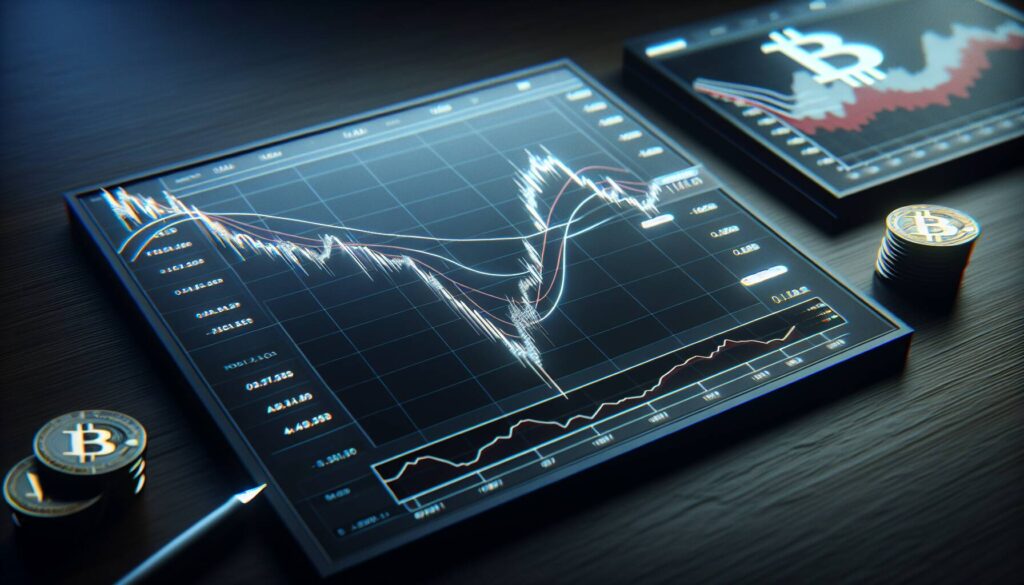A recent analysis from a leading ratings agency has cast a shadow over the stability of USDT, a major player in the world of stablecoins. This report highlights an intriguing trend: Bitcoin is increasingly capturing a significant share of stablecoin reserves, which raises questions about the stability and resilience of traditional stablecoins like Tether’s USDT.
With Bitcoin’s growing prominence, the agency warns that USDT may be at risk of falling prices, as it competes with the fluctuating dynamics of the cryptocurrency market. This shift in the balance of stablecoin reserves not only highlights the evolving landscape of digital currencies but also reflects the broader sentiments of investors and users gravitating towards Bitcoin’s historical value as a store of wealth.
“The increasing share of Bitcoin in stablecoin reserves could signal a potential vulnerability for USDT, suggesting that market dynamics are shifting rapidly,” the report states.
This development is pivotal for anyone tracking the cryptocurrency industry, as it underscores the intricate interplay between traditional stablecoins and the leading digital currency. Observers are closely monitoring how this trend might influence user trust and the overall stability of cryptocurrencies in a volatile market.

The Impact of Bitcoin on Stablecoin Reserves
Recent developments have highlighted the relationship between Bitcoin and stablecoin reserves, particularly in regard to USDT. Here are the key points:
- Bitcoin’s Rising Share: The increasing proportion of Bitcoin in stablecoin reserves indicates a shift in market dynamics.
- Vulnerability of USDT: The ratings agency warns that USDT may experience falling prices due to its reliance on Bitcoin’s performance.
- Market Sentiment: As Bitcoin’s value fluctuates, it may create uncertainty for stablecoin investors who depend on price stability.
- Investment Risks: Investors holding USDT could face potential losses if Bitcoin’s downward trends impact stablecoin valuations.
- Broader Implications: This situation could influence decisions for both individual and institutional investors in the cryptocurrency market.
This evolving scenario underscores the interconnectedness of cryptocurrencies and emphasizes the need for investors to stay informed about market trends.
Analysis of Bitcoin’s Impact on Stablecoin Dynamics
The recent insights from the ratings agency present a noteworthy perspective on the shifting landscape of stablecoins, particularly USDT. As Bitcoin continues to gain a prominent share in stablecoin reserves, it has introduced a level of vulnerability for USDT in the face of potential price fluctuations. This evolution highlights both competitive advantages and disadvantages for various stakeholders in the cryptocurrency market.
On one hand, the increased presence of Bitcoin within stablecoin reserves can bolster confidence among investors who view Bitcoin as a stable digital asset amidst volatility. This trend may attract more investors seeking the potential benefits of Bitcoin’s liquidity within a stablecoin framework. However, the correlation also poses risks; as Bitcoin experiences price drops, the pressure on USDT’s value may increase, causing panic among users who rely heavily on its peg to the dollar.
Investors and crypto traders may find themselves in a precarious situation. While Bitcoin’s adoption could draw new players into the market, those reliant on USDT for stability could face significant risks. The dual nature of this development may favor risk-tolerant investors who can leverage Bitcoin’s upward momentum, but may create challenges for more conservative market participants who prioritize security and traditional peg stability.
Overall, while the growing interdependence between Bitcoin and stablecoins signals a potential shift in investment strategies, it is crucial for investors to remain vigilant about the inherent risks. The changing dynamics might either pave the way for innovative trading practices or exacerbate market uncertainties, making it imperative for involved parties to assess their positions carefully.














